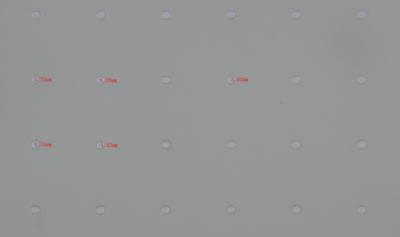XTPL and QustomDot have joined forces in a EU-supported consortium that aims to develop printed and flexible microLED displays (BAMBAM*). We are excited to announce that the two companies have tested a new generation of InP-based quantum dot (QD) inks that have the potential to revolutionize the field of microLED displays. The experiments showcase the excellent compatibility of QustomDot's unique red and green inks with XTPL’s state-of-the-art Delta Printing System.
QD inks deposited with unparalleled precision, accuracy and uniformity, as attested by a reproducibility of the deposited droplet diameter is 3,5 µm and its height below 300 nm – well within the requirements for microLED. Being able to do this on both hydrophobic and hydrophilic surfaces, our solution further highlights the versatility towards different integration flows. The prints are capable of satisfying the current demands for display printing and the prospective requirements for manufacturing microLEDs. The combined impact of XTPL’s printing system and QustomDot’s QD inks indicates that this technology is incredibly versatile, and presents exciting opportunities for expanding the use of QD-based ink printing on a larger scale. The results have been nothing short of spectacular!
Green QD ink microdots printed using patented XTPL Ultra Precise Deposition technology.
* The BAMBAM project is funded under Horizon Europe Grant Agreement n°101070085. We thank the European Union for its support. Views and opinions expressed are those of the author(s) only and do not necessarily reflect those of the European Union. Neither the European Union nor the granting authority can be held responsible for them.
This was a sponsored post by XTPL
